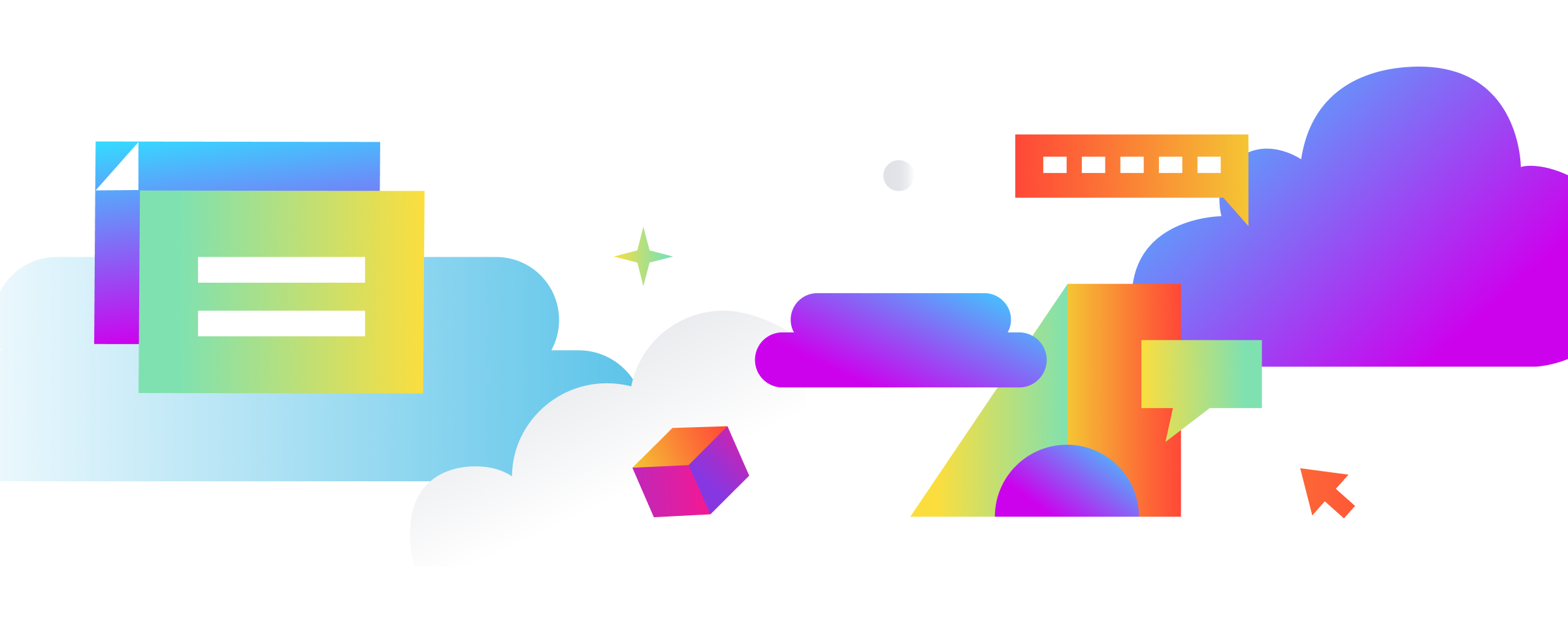
The hybrid and multi-cloud environment can be confusing, regardless of whether you’re the Infrastructure and Operations division leader at a large enterprise or a mid-sized business looking to scale. No matter your business size, we’ve got the answers to the most commonly asked questions, including how Anthos can help.
Our Ask SME About series was specifically built so our SMEs can share their hands-on knowledge and answer the array of queries we regularly hear about a range of topics.
As the Anthos Practice Lead, I’m here to make sure you walk away with a better understanding of Anthos and the hybrid/multi-cloud environment. Ready? Let’s dive in!
New to Anthos? Check out our overview blog post—All About Anthos—for an overview.
 |
ABOUT SME:Max Kozinenko is a Solutions Architect with more than 15 years of IT experience. He is passionate about DevOps culture, workflows, microservice architecture and SOA, PaaS, IaaS, and clouds. Max brings years of battle-tested programming, managerial, and platform automation experience. These enable him to make the right decisions on architectural points in enterprise solutions, as well as on startup planning. Regarding "right" decisions, Max will tell you, "There are no good or bad tools—only the right tools for the job."
|

1. WHAT IS ANTHOS?
Anthos is a part of Google Cloud who defines it as “a modern application management platform that provides a consistent development and operations experience for cloud and on-premises environments.
But Anthos is more than just a platform—it’s an entire ecosystem. What sets Anthos apart is that it allows you to use the same tools and workflows to manage your cloud environments consistently. It doesn’t matter whether these environments are on-premise VMWare based clusters or Google Cloud, AWS, and Azure-based clusters—Anthos gives you the ability to handle them all.
2. WHAT ARE BENEFITS OF USING ANTHOS' HYBRID CLOUD?
While there are many, one of the main benefits of Anthos is utilizing the public cloud’s scalability without having to place your secured workloads there.
OpenBank API is an excellent example of this, though this benefit easily applies to a wide array of use cases.
3. COULDN'T I USE PUBLIC CLOUD?
Yes, you absolutely can. We’ve helped many of our clients to do precisely that.
However, you need to be mindful of any regulatory or compliance requirements. These requirements may restrict you from running any sensitive applications or storing sensitive data in the public cloud.
4. SO, WHY USE ANTHOS INSTEAD OF JUST PUBLIC CLOUD?
Since it’s not always quick and easy to migrate legacy applications to the cloud (be it public or not), Anthos can streamline the process.
Anthos allows you to run legacy or restricted applications using your on-premise environment while also tapping into the cloud’s scalability for newer and less restricted applications. This means these more modern apps have access to any needed on-prem data through secured APIs or service mesh. The benefit of using Anthos is that you can accomplish all of this without the stress of increased operational complexity.
5. HOW DO I KNOW WHICH CLOUD OR CLOUDS I SHOULD PICK FOR MY WORKLOADS AND DATA?
This can vary widely, especially depending on any potential restrictions you might have based on your business vertical. The good thing is with Anthos you’re able to choose.
You could use the same approach and run your applications in any public cloud. And you won’t have to rework every little thing, which can be very attractive for anyone dealing with multiple clouds.
Think of the nightmare it must be dealing with multiple Terraform codebases: You have numerous cloud provided services that are different from cloud to cloud, with the added necessity of different architecture mapping like networking and storage services.
With Anthos, all those layers are handled for you.

6. HOW DOES ANTHOS HANDLE WORK ACROSS MULTIPLE CLOUDS AND ENVIRONMENTS?
Without getting deep into the technical details, it manages multiple clouds and environments using the same Kubernetes clusters. However, Anthos also offers another level of infrastructure abstraction, treating cloud infra as a Kubernetes object. You’re able to run your workloads with the Anthos admin clusters handling cloud API to provision user clusters.
Anthos offers a simpler management model overall, which can function independently with different cloud providers. You’re provided with a seamless, single API for managing user clusters, while under the hood, Anthos manages the infrastructure on its own.
7. HOW CAN I BE SURE MY ENVIRONMENT IS SECURE?
As Anthos is a centralized solution for managing environments and workloads, it’s built with security in mind and comes with a hardened networking security approach for each cloud. It utilizes a rich set of Google Cloud security features, including Binary Authorization and Kubernetes security elements such as Pod Security and Network Policies. All of this enables you to control your security on a perimeter level and within each cluster.
You’ll add even more granular security controls for discrete objects like PODs by having Anthos Service Mesh on the top.
8. CAN ANTHOS SPEED UP MY APPLICATION MODERNIZATION?
Most times, the answer is yes. The Migrate for Anthos tool can significantly speed up the modernization process.
While Migrate for Anthos isn’t able to work in some corner cases, it can, for example, ease up some massive containerization effort for JavaEE applications.
9. WHAT TOOLS DOES ANTHOS SUPPORT?
Designed as a modular ecosystem, Anthos lets you utilize all proprietary ecosystem tools, such as Anthos Configuration Manager, Anthos Service Mesh, etc.
Or you can replace them with open source analogs such as Flux or Istio. A benefit of using Anthos is that you can use everything out of the box or plug in some custom tools and solutions such as Harbor, Falco, Jenkins/Gitlab, and more.
10. WHAT OTHER VENDORS DOES ANTHOS SUPPORT?
Anthos currently supports AWS, GCP, and VMWare platforms for hosting its clusters, with Azure support coming soon.

11. CAN YOU MAKE MY DEVELOPERS’ LIFE EASIER WITH SERVERLESS AND ANTHOS?
Many people are familiar with KNative these days, and Anthos provides a feature-rich KNative based framework called CloudRun. It’s the same as Google CloudRun, but instead, it runs on your VMWare or AWS based clusters.
12. HOW DOES ANTHOS HANDLE CLUSTER UPGRADES?
This is one of my favorite features of Anthos. It uses the same GKE—Google Kubernetes Engine—for all of the platforms it supports. That means upgrades are handled similarly across the board, with all the same features and all the same certified Kubernetes releases.
13. WHAT ARE SOME COMMON CUSTOMER USE CASES?
It varies depending on the sector, but there are numerous use cases across the board. For example, in financial services, Anthos is regularly used to improve governance and customer engagement, along with retail banking. Within the healthcare realm, Anthos can batch workloads as well as protect sensitive user data. It also incorporates machine learning to streamline processes.
Even manufacturing can see benefits from using Anthos as part of their IoT. It allows companies to do things like detect defects on production lines to identify and fix these issues.
14. CAN I MODERNIZE WITHOUT LOSING OUT ON MY EXISTING INVESTMENTS?
Absolutely! Since Anthos brings consistent management of applications across multiple clouds and on-premises, you can use what you have in addition to Anthos.
What’s more, if you’re not ready to move to the cloud, that’s fine! You can work on modernizing apps on-prem with Anthos before any migration needs to take place. And with hybrid, you’ll always be sure of delivering a consistent user experience.
Plus, unlike other hybrid offerings, Anthos doesn’t require you to write off your datacenter lease. Instead, you can use what you’ve already paid for to build a consistent environment that scales into a Google Cloud.
Anthos includes GKE On-Prem, which is a managed Kubernetes solution that runs in your data center. GKE On-Prem allows you to manage all connected clusters from the same Google Cloud Console, and therefore handle the deployment of customer/marketplace apps.
15. WHAT’S THE REAL VALUE OF USING ANTHOS?
It can depend since different companies can find different values.
Something that they all likely have in common though is that favorite “buzzword” of lowering TCO and increasing ROI. Anthos accomplishes this since you don’t need different people with different skill sets to manage different environments. Plus, you can utilize cloud scalability right from the start, which means more customers and better customer services.


SoftServe is a Google Cloud Premier Partner specializing in Machine Learning, IoT, Infrastructure, Cloud Migration & Data Analytics. We’re proud to have a certified Anthos fellow along with the designation of “Anthos: Hybrid/Multi-Cloud App Platform” expertise within the Google partner program.
Our experts are focused on Application Modernization with Anthos + Apigee and can specialize and support the entire Anthos family—including infrastructure, Data, AI, ML, and Apigee Hybrid.
Ready to get started?



